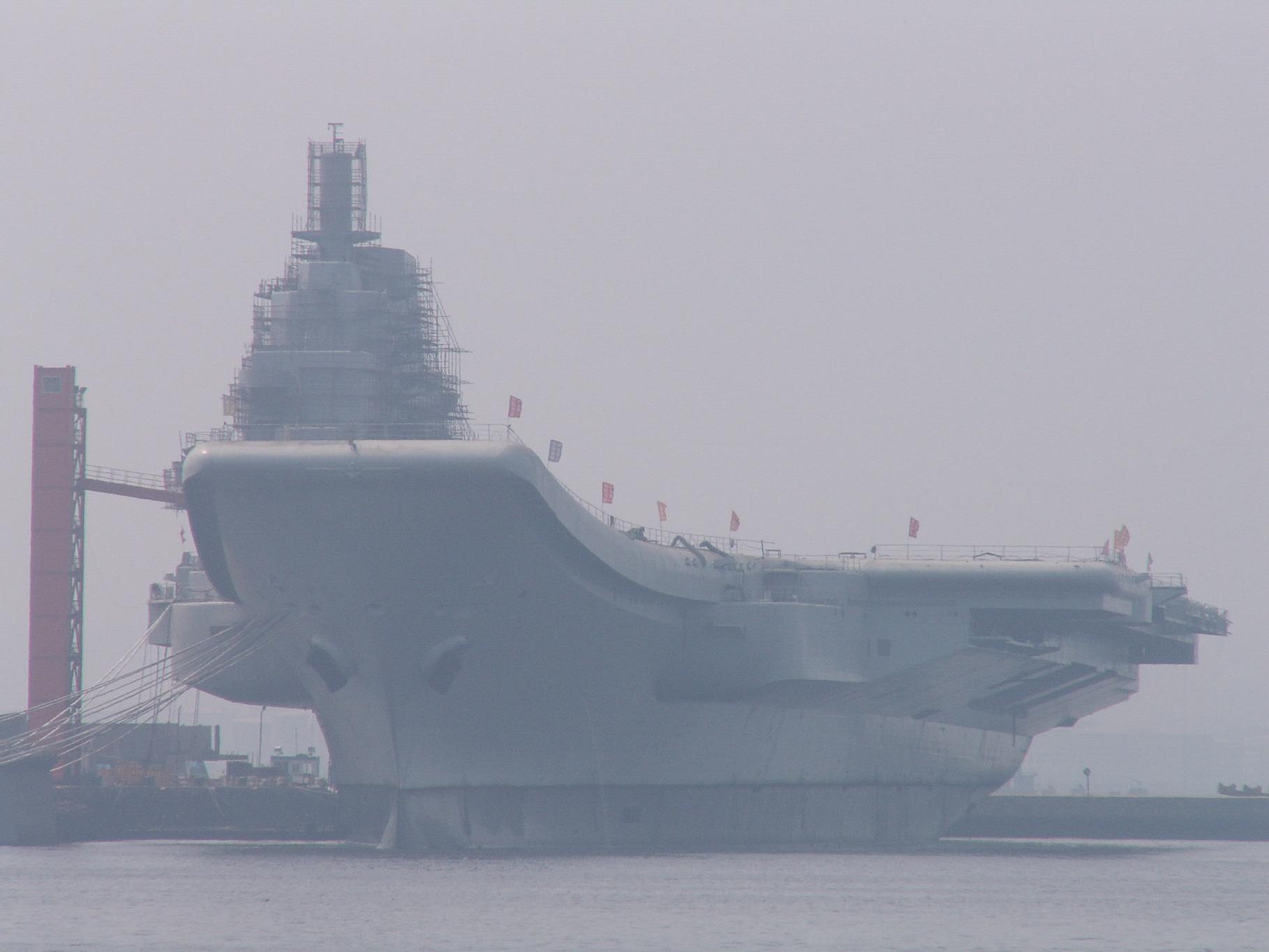China’s first aircraft carrier will allow Beijing to further pressure nations with rival territorial claims, analysts said Wednesday as the vessel embarked on its inaugural sea trial.
China has for years been revamping a 300-metre (990-foot), former Soviet carrier in the northeastern port of Dalian, after buying the vessel — once called the Varyag — from Ukraine in 1998.
Experts said the carrier’s maiden trip, announced in a brief statement on the defence ministry’s website, would deal a psychological blow to neighboring countries at a time of heightened regional tensions.
Rick Fisher, a US expert on the Chinese military, said Beijing was allowing reports and scant online images of the vessel to “propel anxieties” while saying very little about its aircraft carrier project and naval ambitions.
“This ‘psywar’ campaign has everything to do with China’s multiple ongoing maritime territory disputes,” said Fisher, of the US-based International Assessment and Strategy Center.
“China clearly wants to bully its neighbors into making concessions without having to engineer a shooting “incident” that might unite these same neighbors against it.”
Jonathan Holslag, of the Brussels Institute of Contemporary China Studies said the new aircraft carrier will be perceived as another indication of China’s growing military ambitions.
“It will prompt neighboring countries to shore up their own capabilities,” Holslag wrote in a commentary published shortly before Wednesday’s sea trial.
Beijing has consistently tried to allay fears about the aircraft carrier, saying it will mainly be used for training and “research”, and that it poses no threat to other countries.
Fisher said the carrier was “practically ready to support combat missions”, although other analysts say it will not be operational as part of a wider naval battle group for several years at least.
But for the secretive People’s Liberation Army — the largest armed force in the world — the carrier is first and foremost an issue of prestige, as even Thailand, a much smaller country than China, has one.
In a comment piece published Wednesday, the official Xinhua news agency pointed out that China was the only permanent member state of the UN Security Council that did not own an aircraft carrier, adding India also has one.
“The Chinese can point proudly to the Varyag, or any other piece of new equipment, and feel like they have entered the ranks of advanced militaries,” said Dennis Blasko, an expert on China’s military.
The carrier is also important from a strategic standpoint. China’s interests now stretch out all over the world, and it needs to intervene far from home, particularly on maritime routes crucial to its oil imports.
Independent experts are convinced that far from just having one, renovated vessel, China’s defence ministry has also launched a programme to build one to two brand new, indigenous aircraft carriers.
“I consider it plausible that by the late 2020s, China could have up to six carriers, three non-nuclear for regional missions and three nuclear-powered carriers that will be advancing China’s interests well beyond the Asian region,” said Fisher.
But the PLA — which operates China’s navy — is hugely secretive about its defence programmes, which benefit from a big and expanding military budget boosted by the nation’s runaway economic growth.
Beijing has provided scant details about the carrier, even when it finally officially acknowledged the vessel’s existence in June, and analysts say this could be a strategic move.
“China needs time to learn to operate an aircraft carrier and carrier group (a carrier and its escort ships), and deliberately takes a low-key posture,” said Arthur Ding, a Taiwan-based expert on the PLA.
But Beijing’s relative silence could also be an effort by the government to allay regional worries about its military expansion, and avoid undermining its claim that China’s army is purely defensive in nature.
Last week, Japan voiced concern over China’s growing assertiveness and widening naval reach, and over what it called the “opaqueness” of Beijing’s military budget.
China is nevertheless rapidly upgrading its army’s capabilities, developing advanced weaponry such as its first stealth fighter jet, revealed in January.
It is also working on a ballistic missile that can hit warships thousands of kilometres away.










